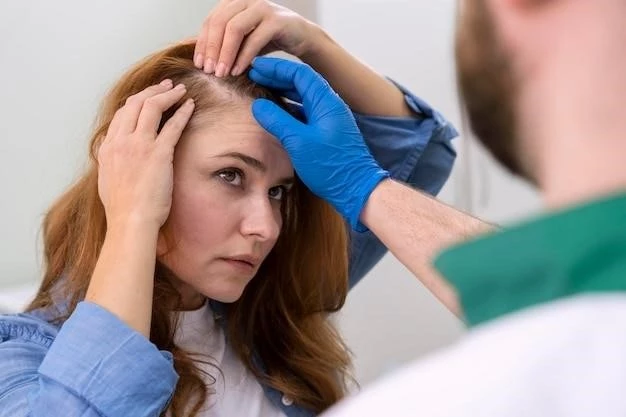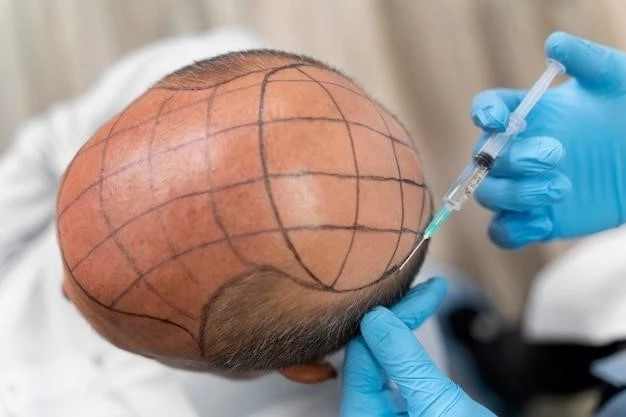Introduction to Sabinas Brittle Hair Syndrome
Sabinas Brittle Hair and Mental Deficit Syndrome is a rare genetic disorder causing brittle hair‚ nails‚ and mild intellectual disability. Learn more below.
Overview of the Disease
Sabinas Brittle Hair and Mental Deficit Syndrome is a rare inherited genetic disorder characterized by brittle hair‚ nails‚ and mild intellectual disability. The syndrome is linked to specific biochemical characteristics and manifestations within different subgroups. Understanding the symptoms and genetic heterogeneity of this syndrome is crucial for effective diagnosis and management.
Genetic and Biochemical Characteristics
Sabinas Brittle Hair Syndrome is a rare inherited disorder with distinct genetic and biochemical characteristics impacting hair and nails. Learn more below.
Reduced Hair Cystine Levels
Sabinas Brittle Hair Syndrome is characterized by reduced hair cystine levels‚ leading to brittle hair and nail abnormalities; Understanding this aspect is crucial for diagnosis and treatment strategies.
Increased Copper⁚Zinc Ratio
One of the key biochemical characteristics of Sabinas Brittle Hair Syndrome is the increased copper to zinc ratio‚ which plays a role in the manifestation of the syndrome. Understanding this imbalance is crucial for diagnosis and potential treatment approaches.

Different Subgroups within Sabinas Brittle Hair Syndrome
This syndrome comprises different subgroups⁚ Simple Trichothiodystrophy‚ Sabinas Syndrome‚ and Pollitt Syndrome. Understanding these distinctions is essential for accurate diagnosis and personalized care.
Subgroup A⁚ Simple Trichothiodystrophy
Simple Trichothiodystrophy is a subgroup of Sabinas Brittle Hair Syndrome characterized by brittle hair with low-sulfur content due to abnormal keratin synthesis. Recognizing the specific features of this subgroup is vital for accurate diagnosis and personalized treatment plans.
Subgroup B⁚ Sabinas Syndrome
Sabinas Syndrome is an autosomal recessive disorder linked to brittle hair‚ nail deformities‚ and mental retardation. Diagnosis at birth is essential for managing the associated symptoms effectively.
Subgroup C⁚ Pollitt Syndrome
Pollitt Syndrome‚ a subgroup of Sabinas Brittle Hair Syndrome‚ is characterized by symptoms such as folliculitis‚ karies‚ and delayed bone development. Identifying and understanding the features of this subgroup are crucial for comprehensive diagnosis and personalized treatment strategies.
Clinical Features and Diagnosis
Sabinas Brittle Hair Syndrome presents with distinctive structural hair abnormalities and nail dysplasia. Diagnosis involves recognizing these features for accurate identification and appropriate management.
Structural Hair Abnormalities
Sabinas Brittle Hair Syndrome manifests structural hair abnormalities detectable through light and electron microscopy. Recognition of these abnormalities is essential for accurate diagnosis and appropriate management of the condition.
Nail Dysplasia
In Sabinas Brittle Hair Syndrome‚ nail dysplasia is a common feature along with structural hair abnormalities. Recognizing and addressing nail dysplasia is crucial for a comprehensive diagnosis and effective management of the syndrome.
Prognosis and Life Expectancy
Impact on children with severe disease can be significant‚ leading to a median age of death around 3 years. Expert care and monitoring are crucial for managing the syndrome.
Impact on Children with Severe Disease
Children with severe Sabinas Brittle Hair Syndrome face significant challenges‚ with a reported median age of death around 3 years. Understanding the impact of the disease on children is crucial for providing appropriate care and support.
Median Age of Death
The prognosis for children with severe Sabinas Brittle Hair Syndrome is poor‚ with a reported median age of death around 3 years. Providing expert care and monitoring is crucial to managing the symptoms effectively and improving quality of life.
Therapeutic approaches for Sabinas Brittle Hair Syndrome focus on symptom management and supportive care. Clinical strategies aim to improve the quality of life for individuals with this condition.
Treatment and Management
Therapeutic approaches for Sabinas Brittle Hair Syndrome aim to address symptoms like brittle hair‚ nail dysplasia‚ and mild intellectual disability. Understanding effective clinical management strategies is crucial in improving the quality of life for individuals with this condition.
Clinical Management Strategies
Clinical management strategies for Sabinas Brittle Hair Syndrome involve a multidisciplinary approach focusing on symptom alleviation‚ supportive care‚ and regular monitoring. Collaborating with healthcare professionals and specialists can help improve the overall quality of life for individuals affected by the syndrome.

Genetic Heterogeneity of Trichothiodystrophy
In Sabinas Brittle Hair Syndrome‚ multiple genes are involved‚ impacting the hair’s sulfur content and leading to characteristic manifestations. Understanding this genetic complexity is crucial for accurate diagnosis and tailored treatment plans.
Involvement of Multiple Genes
Sabinas Brittle Hair Syndrome exhibits genetic heterogeneity‚ with mutations in various genes contributing to the condition. Understanding the involvement of multiple genes is essential for accurate diagnosis and tailored treatment strategies.
Nucleotide Excision Repair Pathway Mutations
Trichothiodystrophy (TTD) involves mutations in genes related to the nucleotide excision repair pathway. This pathway is crucial for repairing DNA damage and understanding these mutations is vital for effective treatment and management of the syndrome.
Connection to Other Syndromes
Sabinas Brittle Hair Syndrome is linked to related conditions such as nonphotosensitive TTD‚ encompassing symptoms like brittle hair and intellectual disability. Understanding this connection is crucial for accurate diagnosis and appropriate management.
Relationship to Nonphotosensitive TTD
Sabinas Brittle Hair Syndrome is associated with nonphotosensitive Trichothiodystrophy‚ characterized by symptoms like brittle hair‚ nail dysplasia‚ and intellectual disability. Recognizing this relationship is essential for accurate diagnosis and personalized treatment plans.
Related Phenotypes and Diseases
Sabinas Brittle Hair Syndrome‚ a form of nonphotosensitive Trichothiodystrophy‚ presents with nail dystrophy and intellectual disability. Understanding the related phenotypes and diseases associated with this syndrome is crucial for accurate diagnosis and effective management.
Research and Drug Development
Current studies and drug trials are exploring advancements in therapeutic options for managing Sabinas Brittle Hair Syndrome. Stay informed about potential developments in treatment and management strategies.
Current Studies and Drug Trials
Researchers are actively conducting current studies and drug trials to explore potential therapeutic options for managing Sabinas Brittle Hair Syndrome. Stay updated on the latest advancements in treatment approaches and drug development to benefit individuals with this condition.
Advancements in Therapeutic Options
Recent advancements in therapeutic options for Sabinas Brittle Hair Syndrome offer hope for improved symptom management and quality of life. Stay informed about emerging treatments to enhance care for individuals affected by this condition.
Impact on Daily Life
Individuals with Sabinas Brittle Hair Syndrome face challenges like brittle hair‚ nail dysplasia‚ and intellectual disabilities impacting daily activities. Coping mechanisms and support systems play a vital role in managing these challenges effectively.
Challenges Faced by Individuals
Individuals with Sabinas Brittle Hair Syndrome encounter challenges such as brittle hair‚ nail dysplasia‚ and mental disabilities affecting their daily functioning. Implementing coping mechanisms and accessing support systems are essential for managing these hurdles effectively.
Coping Mechanisms and Support Systems
Individuals affected by Sabinas Brittle Hair Syndrome can benefit from implementing coping mechanisms and accessing robust support systems to navigate the challenges posed by the condition effectively. These mechanisms and systems play a crucial role in enhancing the quality of life and overall well-being of individuals dealing with the syndrome.
